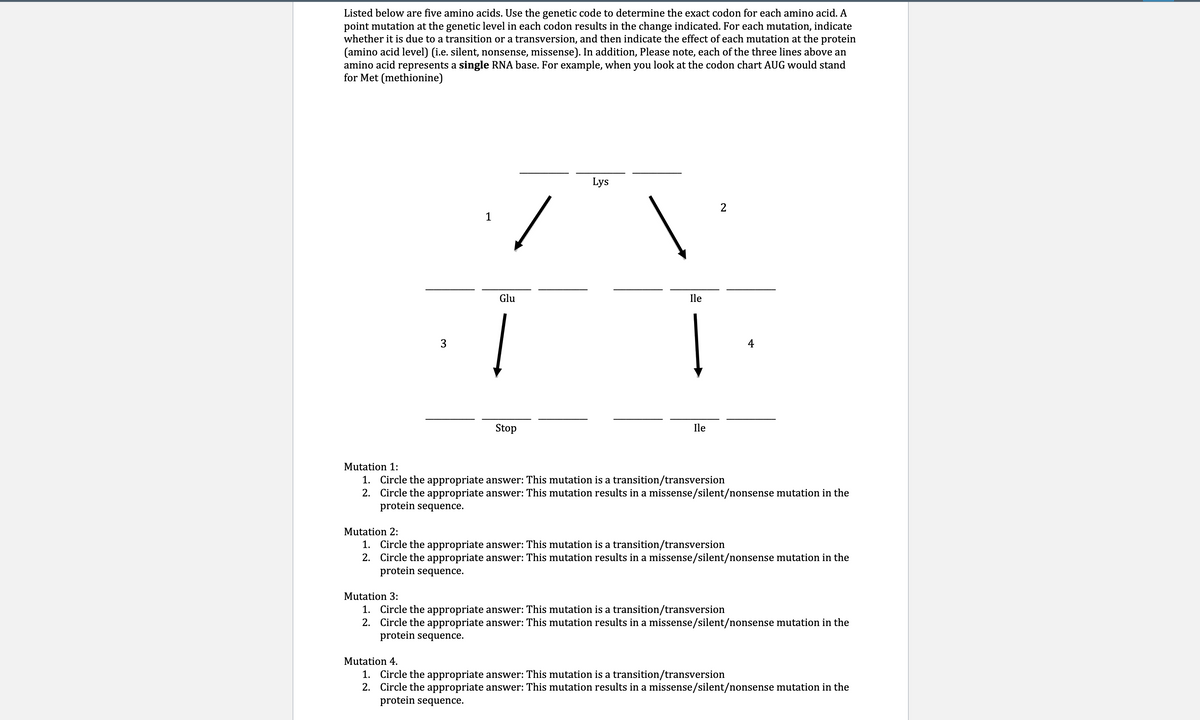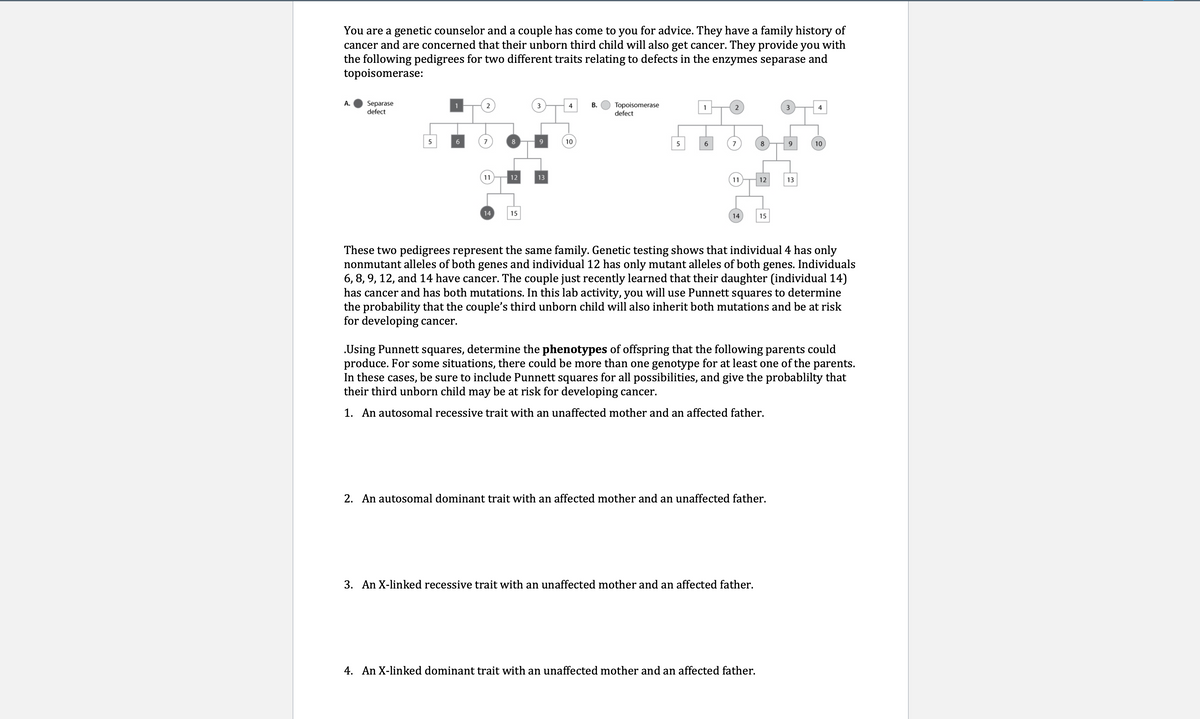Listed below are five amino acids. Use the genetic code to determine the exact codon for each amino acid. A point mutation at the genetic level in each codon results in the change indicated. For each mutation, indicate whether it is due to a transition or a transversion, and then indicate the effect of each mutation at the protein (amino acid level) (i.e. silent, nonsense, missense). In addition, Please note, each of the three lines above an amino acid represents a single RNA base. For example, when you look at the codon chart AUG would stand for Met (methionine) Lys Glu lle 4 Stop Ile Mutation 1: 1. Circle the appropriate answer: This mutation is a transition/transversion 2. Circle the appropriate answer: This mutation results in a missense/silent/nonsense mutation in the protein sequence. Mutation 2: 1. Circle the appropriate answer: This mutation is a transition/transversion 2. Circle the appropriate answer: This mutation results in a missense/silent/nonsense mutation in the protein sequence. Mutation 3: 1. Circle the appropriate answer: This mutation is a transition/transversion 2. Circle the appropriate answer: This mutation results in a missense/silent/nonsense mutation in the protein sequence. Mutation 4. 1. Circle the appropriate answer: This mutation is a transition/transversion 2. Circle the appropriate answer: This mutation results in a missense/silent/nonsense mutation in the protein sequence.
Gene Interactions
When the expression of a single trait is influenced by two or more different non-allelic genes, it is termed as genetic interaction. According to Mendel's law of inheritance, each gene functions in its own way and does not depend on the function of another gene, i.e., a single gene controls each of seven characteristics considered, but the complex contribution of many different genes determine many traits of an organism.
Gene Expression
Gene expression is a process by which the instructions present in deoxyribonucleic acid (DNA) are converted into useful molecules such as proteins, and functional messenger ribonucleic (mRNA) molecules in the case of non-protein-coding genes.


Note: As Per Guidelines, We Can Answer One Question At A Time. Ask Again To get rest answers.
Introduction
The genetic code dictates the amino acid sequence of proteins through the sequence of nucleotides in DNA and RNA.
Trending now
This is a popular solution!
Step by step
Solved in 2 steps









